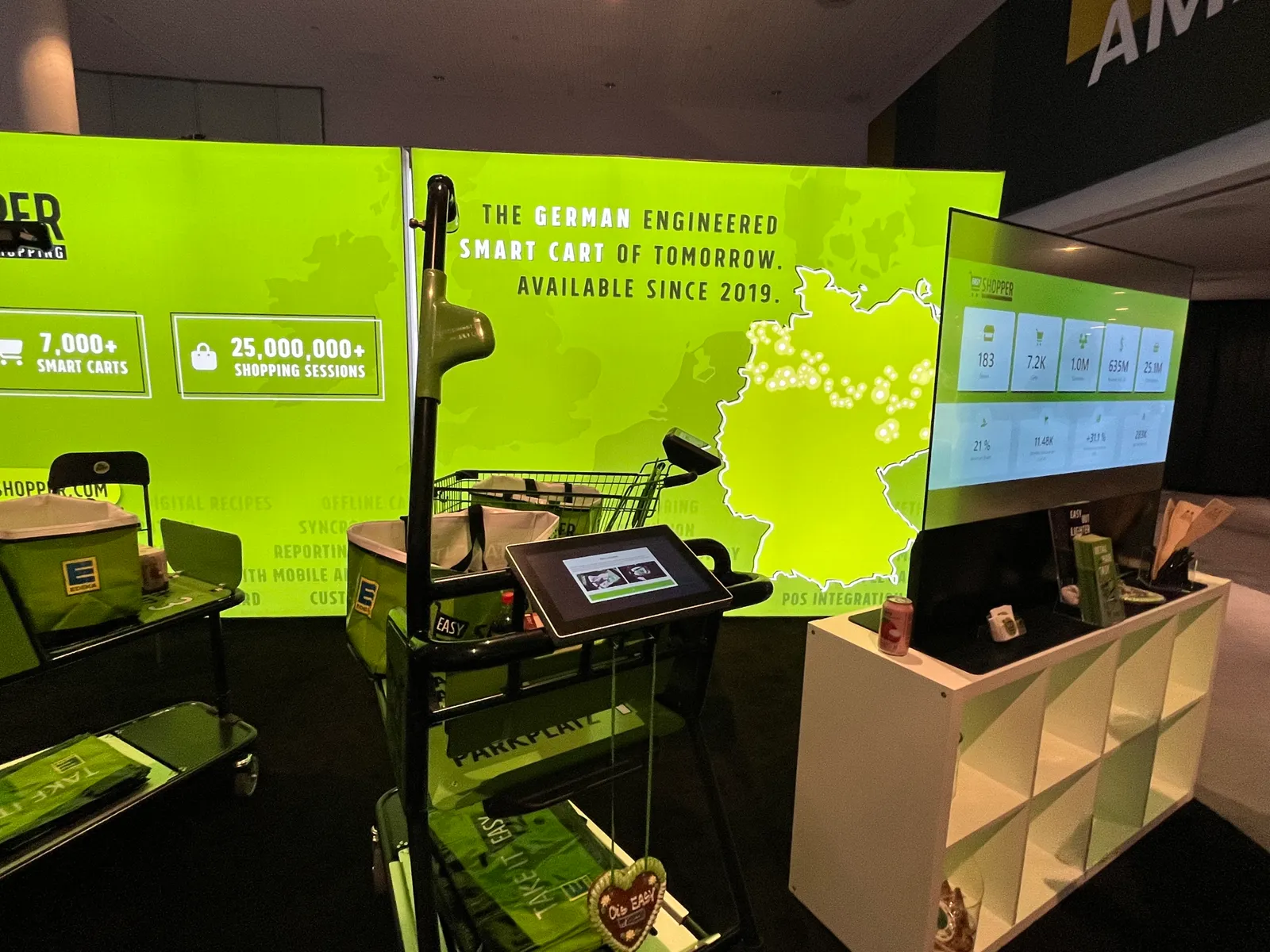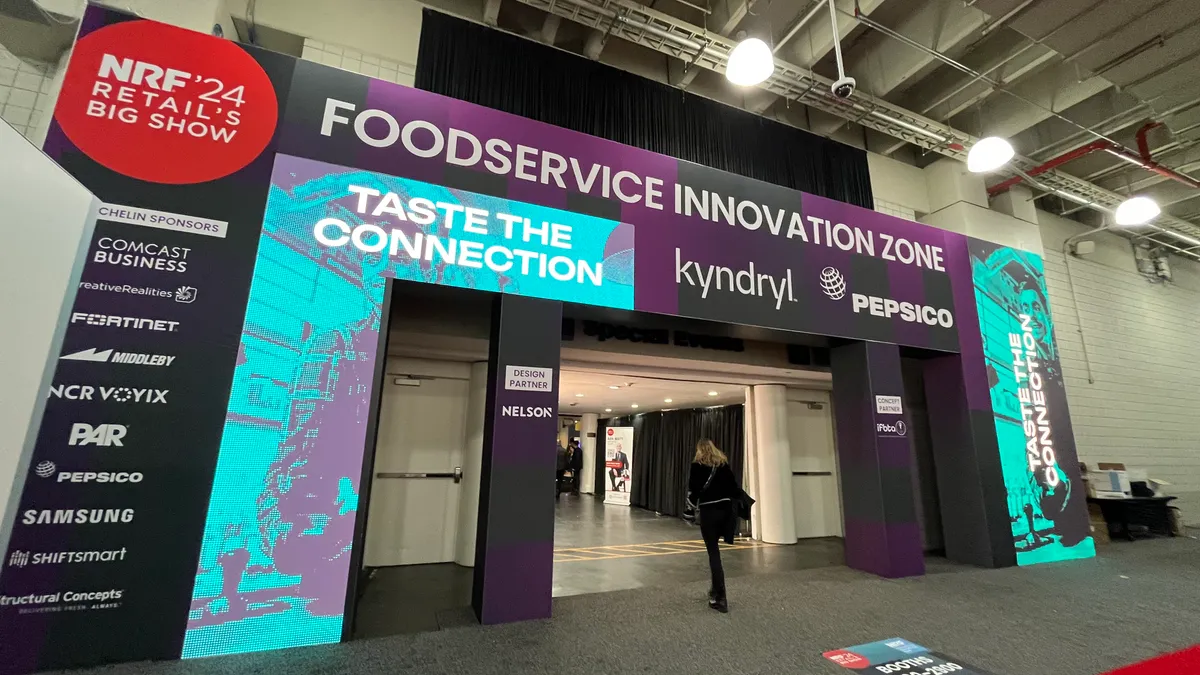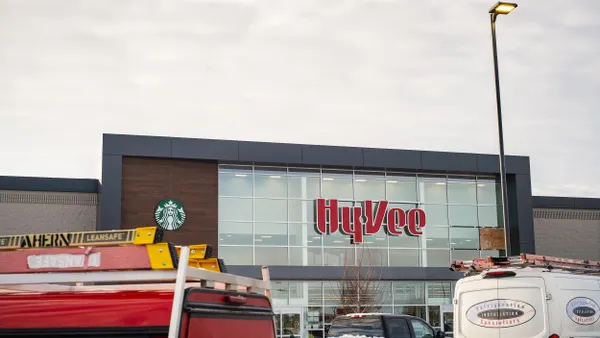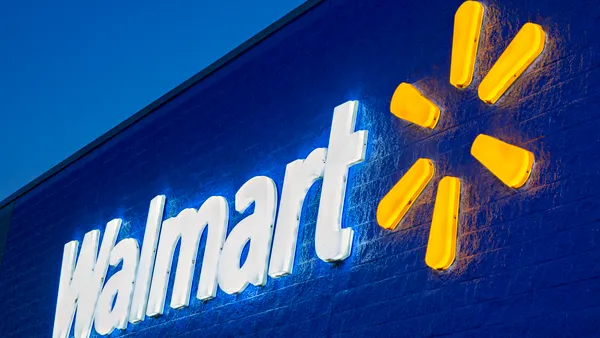NEW YORK — Food and grocery innovation claimed a large spotlight this year at the National Retail Federation’s annual conference in New York. A prime example is the conference’s first-ever Foodservice Innovation Zone — a designated space showcasing more than 50 up-and-coming tech vendors in areas like grab-and-go foods and autonomous pizza prep.
In a video, NRF said that the zone aims to showcase future-forward foodservice vendors in a space where retailers can visualize and experience how these technologies could integrate into their operations.
Attendees could find a range of vendors, from French meal shopping app Jow to Portuguese autonomous store company Sensei, which last March launched with Hewlett Packard Enterprise a roughly 5,380-square-foot autonomous store in Lisbon.
Here’s a look at five of the grocery-related booths in the Foodservice Innovation Zone.
New predictive AI for loss prevention and real-time promotions
Autonomous checkout firm Standard AI is expanding its ceiling cameras beyond just autonomous stores. A few months ago, the firm debuted zone monitoring capabilities that can monitor if customers are purchasing — or swiping — products.
At the NRF conference, the company unveiled its predictive AI solution that predicts shopper behavior so retailers can push out real-time promotions on products they might buy and also get alerts for potential loss. The new predictive AI solution can also alert workers to low inventory. The company says the new offering will help retailers better understand the impact of merchandising changes before they happen.
Not too hot and not too cold
To tap into grocers’ food safety and sustainability needs, Johnson Controls’ Sensormatic Solutions is looking to bring its refrigeration monitoring sensors to U.S. retailers. The sensors, which have a battery life of seven years in the freezer, record temperatures every five minutes to help retailers track if their cold cases are cold enough.
Along with helping to keep perishables within safe temperatures, the sensors can also let retailers know if their cases are too cold, which could lead to higher-than-needed energy usage, according to the company.
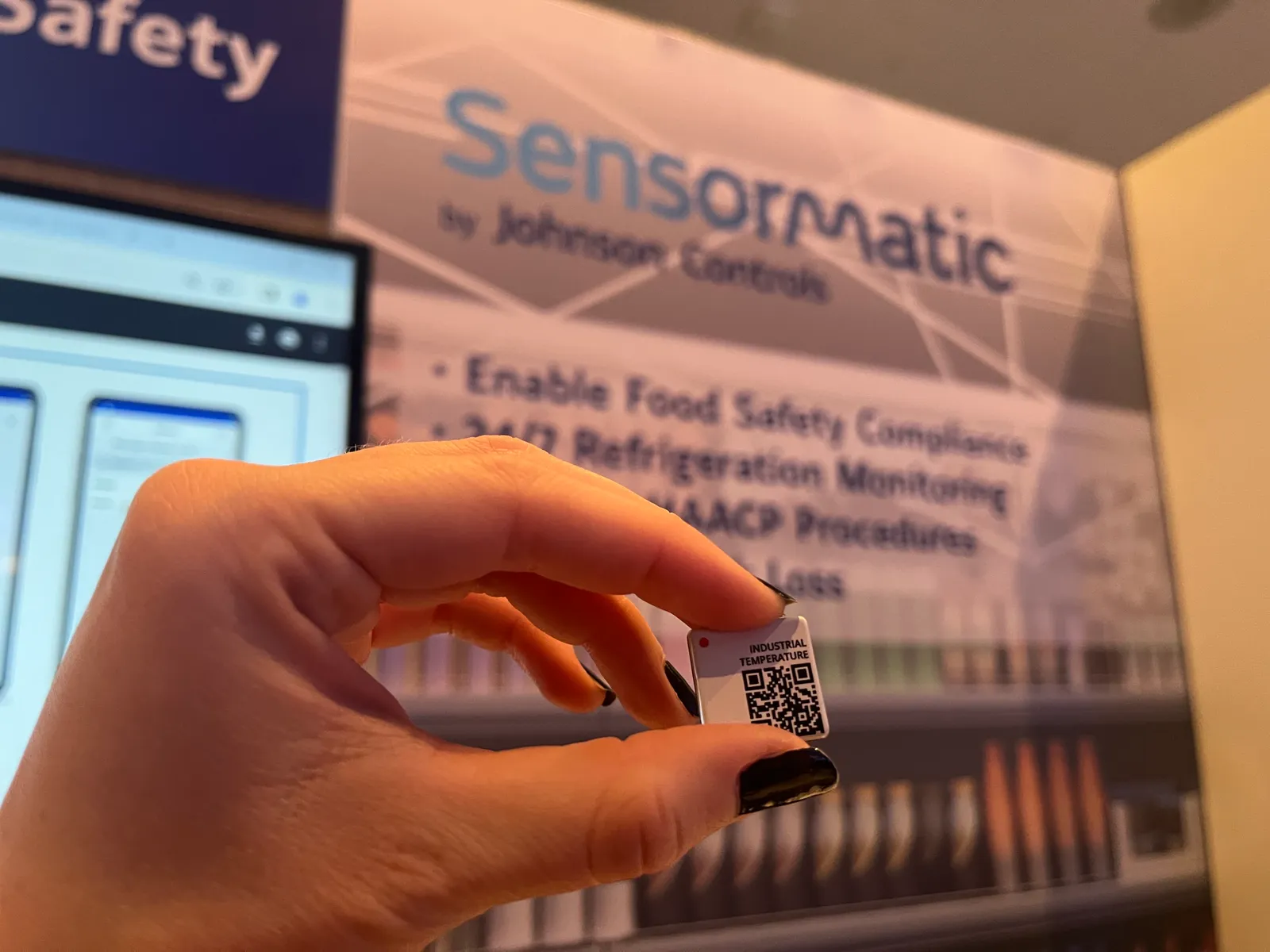
New rival for Amazon’s palm tech
Mashgin, the maker of AI- and computer vision-powered self-checkout systems, showed off its latest frictionless checkout innovation.
Mashgin announced Tuesday it has teamed up with software company Keyo on a biometric ID that uses palm-scanning technology for contactless payment. Like the Amazon One palm-scanning solution, Mashgin’s allows users of its countertop kiosk to hold their hand over Keyo’s hockey puck-sized hand scanner to pay.
Mashgin recently deployed the solution at a large corporate dining facility to speed up cafeteria lines and is promoting it as a solution that’s ideal for cafes, concessionaires and brick-and-mortar retailers seeking fast checkout.
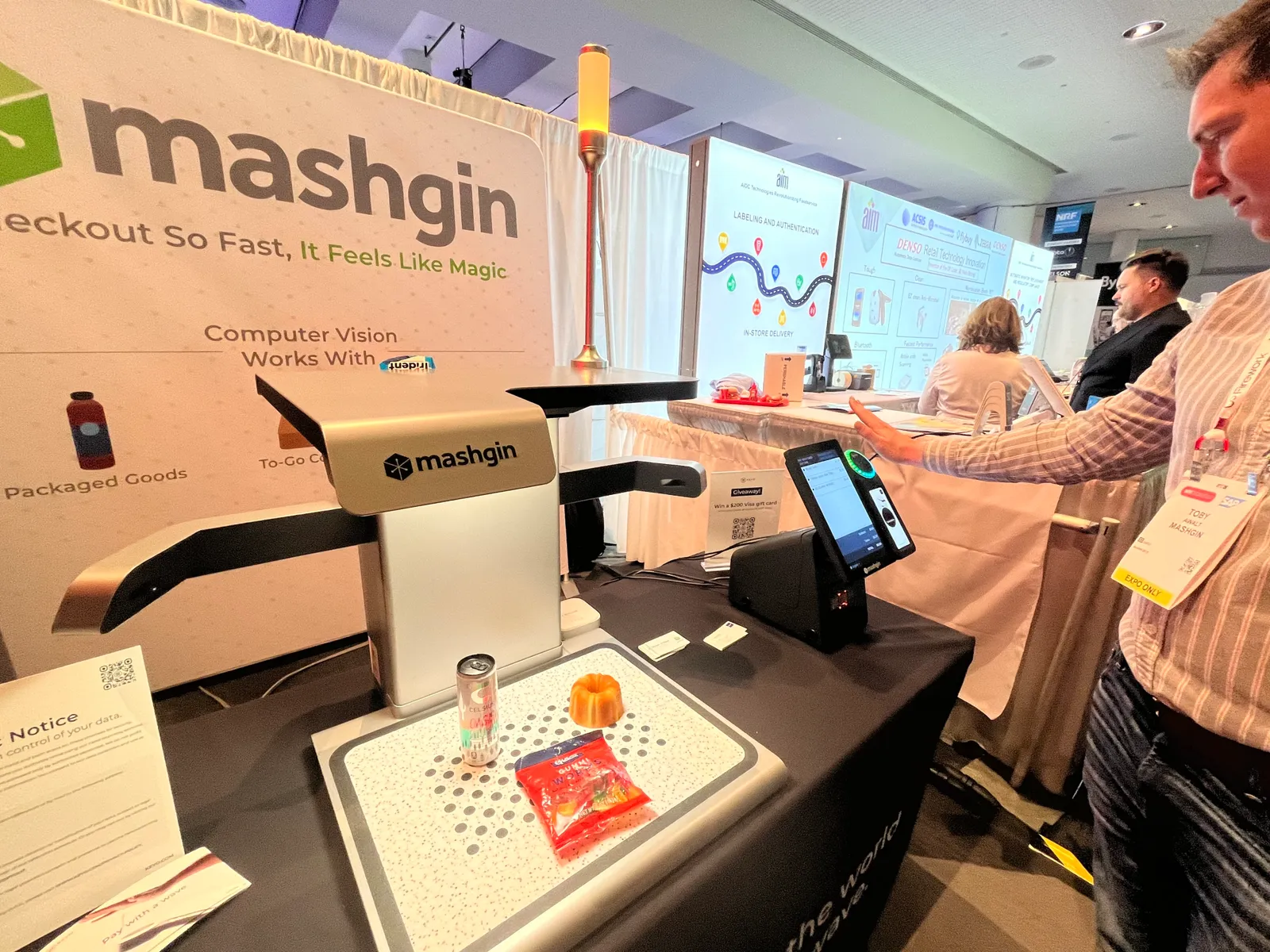
This is not a smart cart...
At first glance it might look like a smart cart, but startup Kwikkart is billing its AI-powered device for autonomous checkout as “not a smart cart.” Kwikkart has a device that clips onto shopping carts and allows people to virtually connect their phone to the device before scanning product barcodes. The device’s computer vision and AI can verify that the person added the correct items to the cart and then people can skip the checkout lines.
Kwikkart is initially focusing on helping e-commerce pickers and delivery couriers work faster by allowing them to skip checkout lines. The startup is aiming to reduce e-commerce costs for retailers and third-party delivery providers by bypassing credit card processing fees and also looking to reduce theft.
Founded in 2021 on the University of California, Berkeley campus by Aaron Gyure and supported by 16 Berkeley engineers, Kwikkart’s spot in the Foodservice Innovation Zone marked the public debut of its solution. Kwikkart has a pilot underway with Point Pickup and upcoming pilots planned with three major third-party delivery providers.
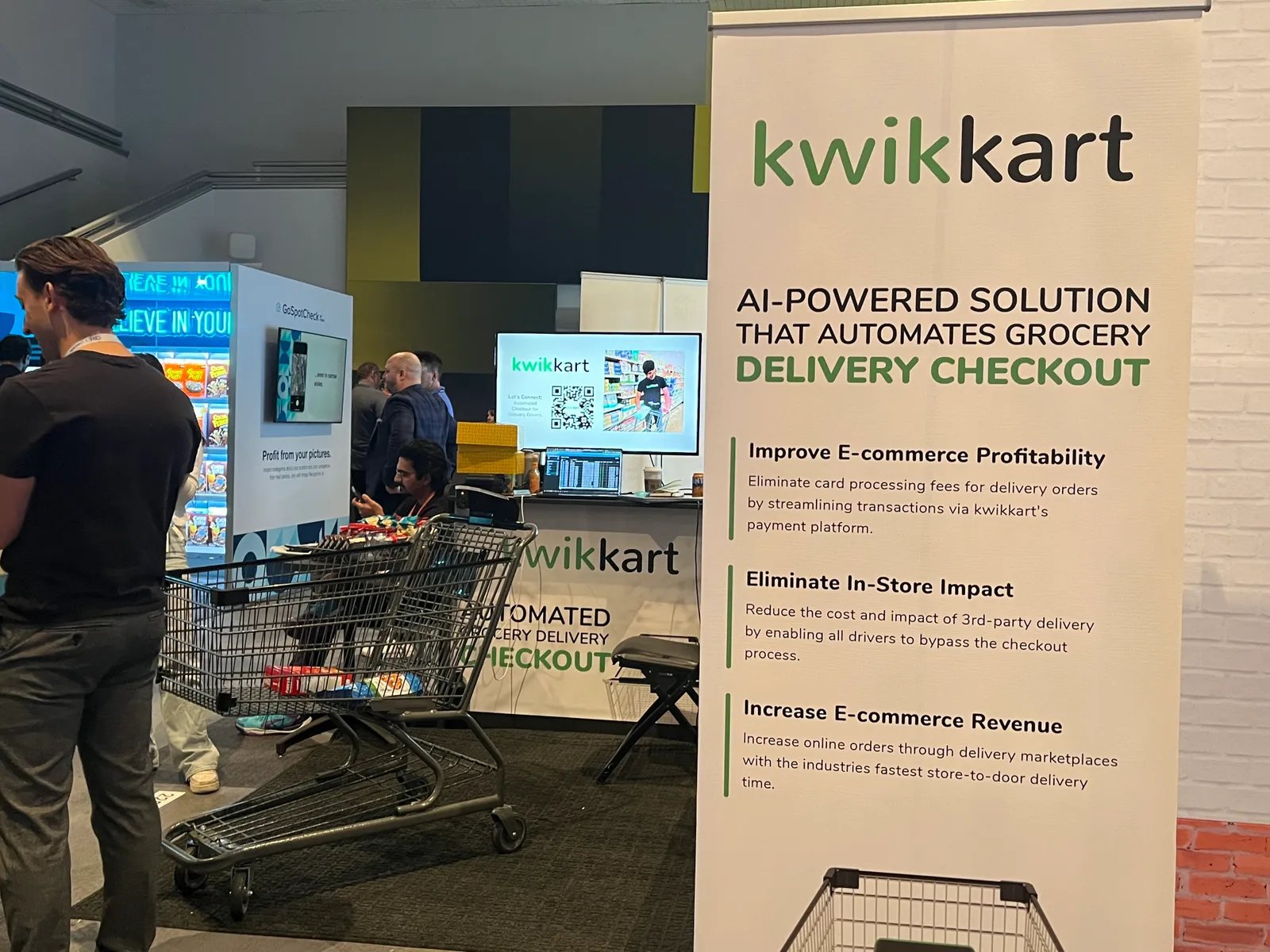
... but this one is
With more than 6,700 carts in over 170 stores in Europe, Easy Shopper is a smart cart solution looking to expand to the U.S.
The cart comes in two versions: a clip-on style that attaches to existing shopping carts or a full smart cart equipped with a scale and camera. To use the latter, customers log in with their loyalty program info or through the Easy Shopper app, scan product barcodes and pay via app. For products within a barcode, like produce, customers can enter the item’s PLU.
People with a shopping list in the Shopper Easy app can display that list on the smart cart. The cart offers in-store navigation, supports ads — including video ads — and includes a catalog of recipes along with product recommendations for the recipes, like suggesting wine for a dinner recipe.
